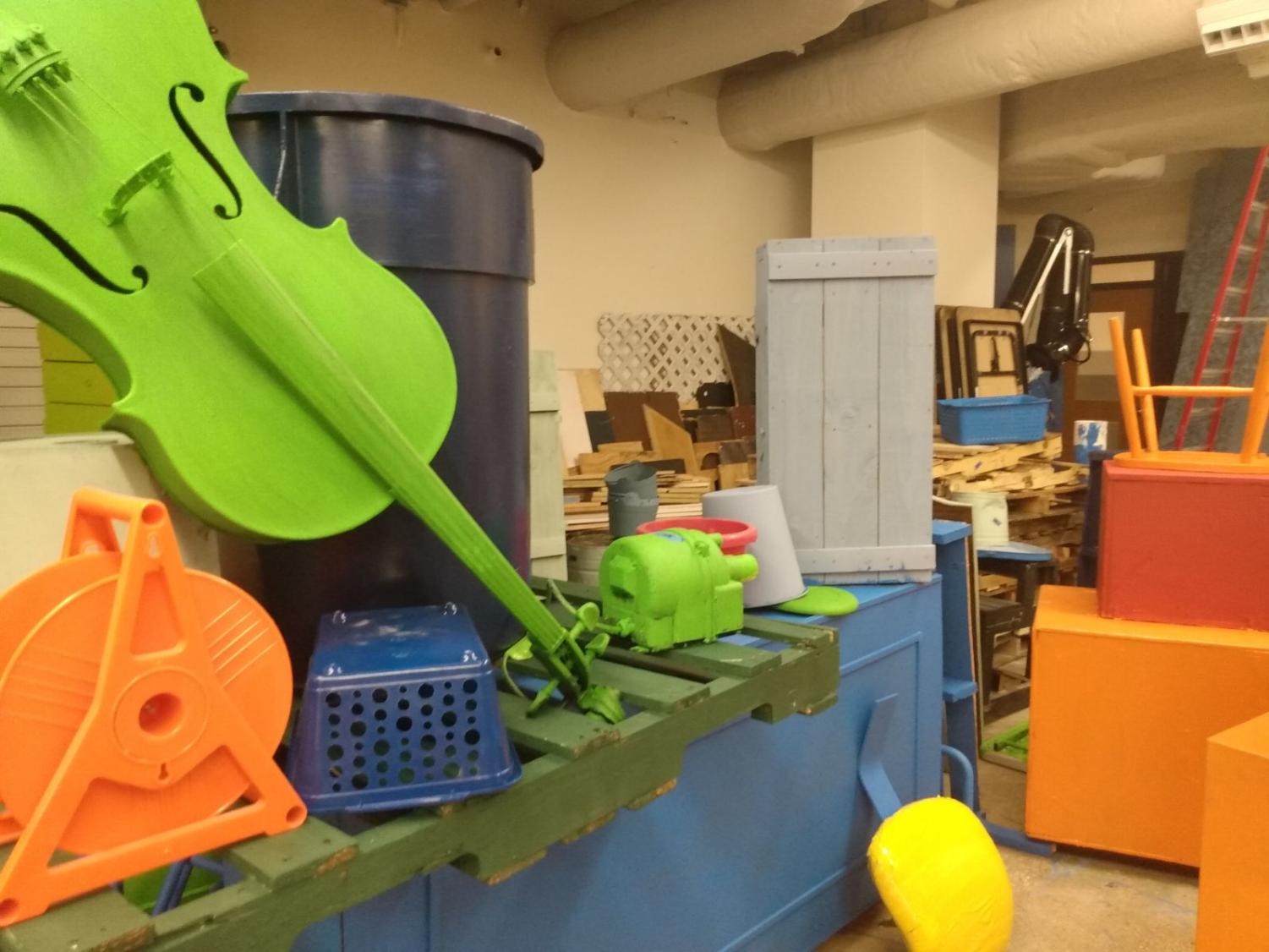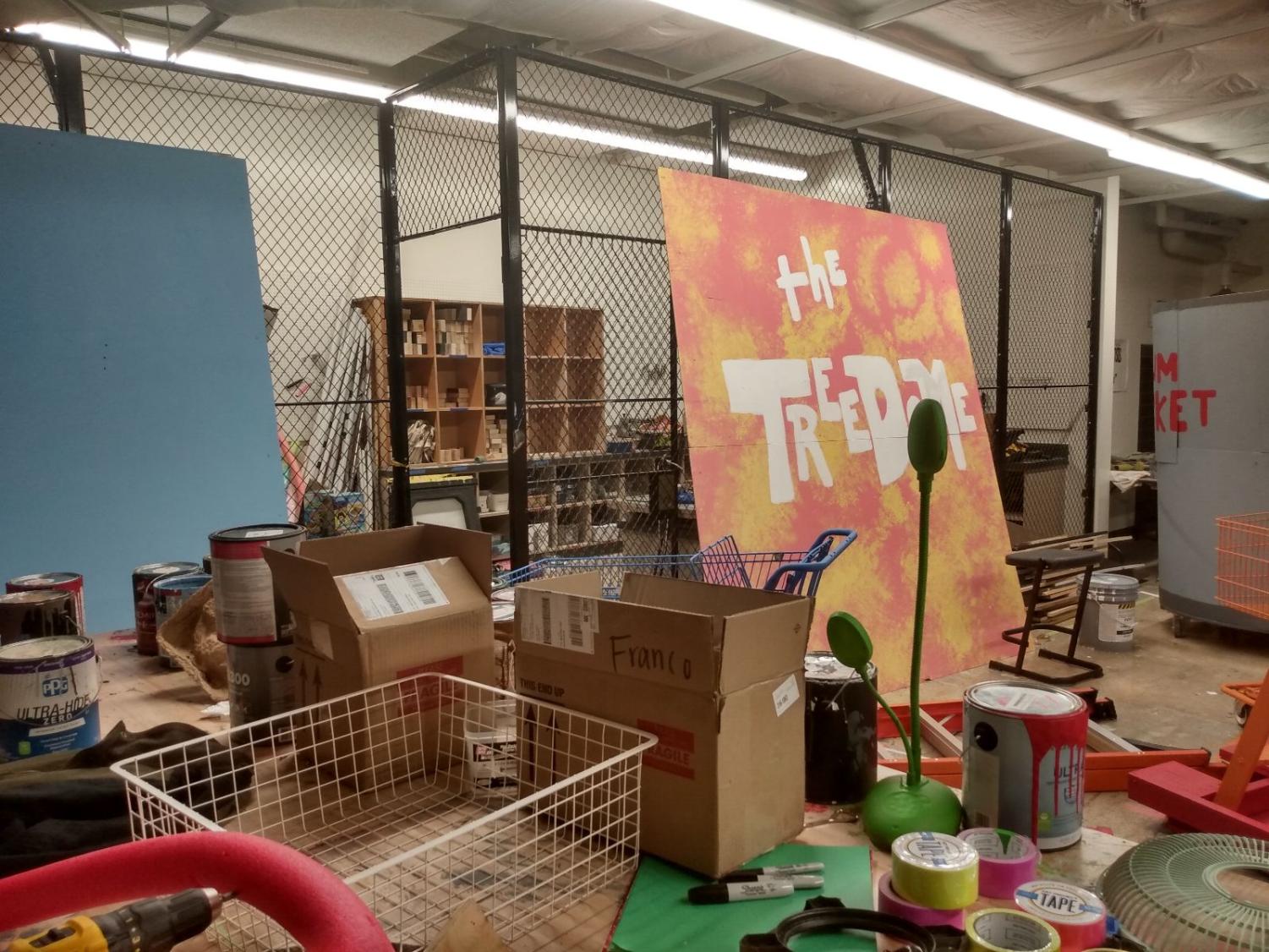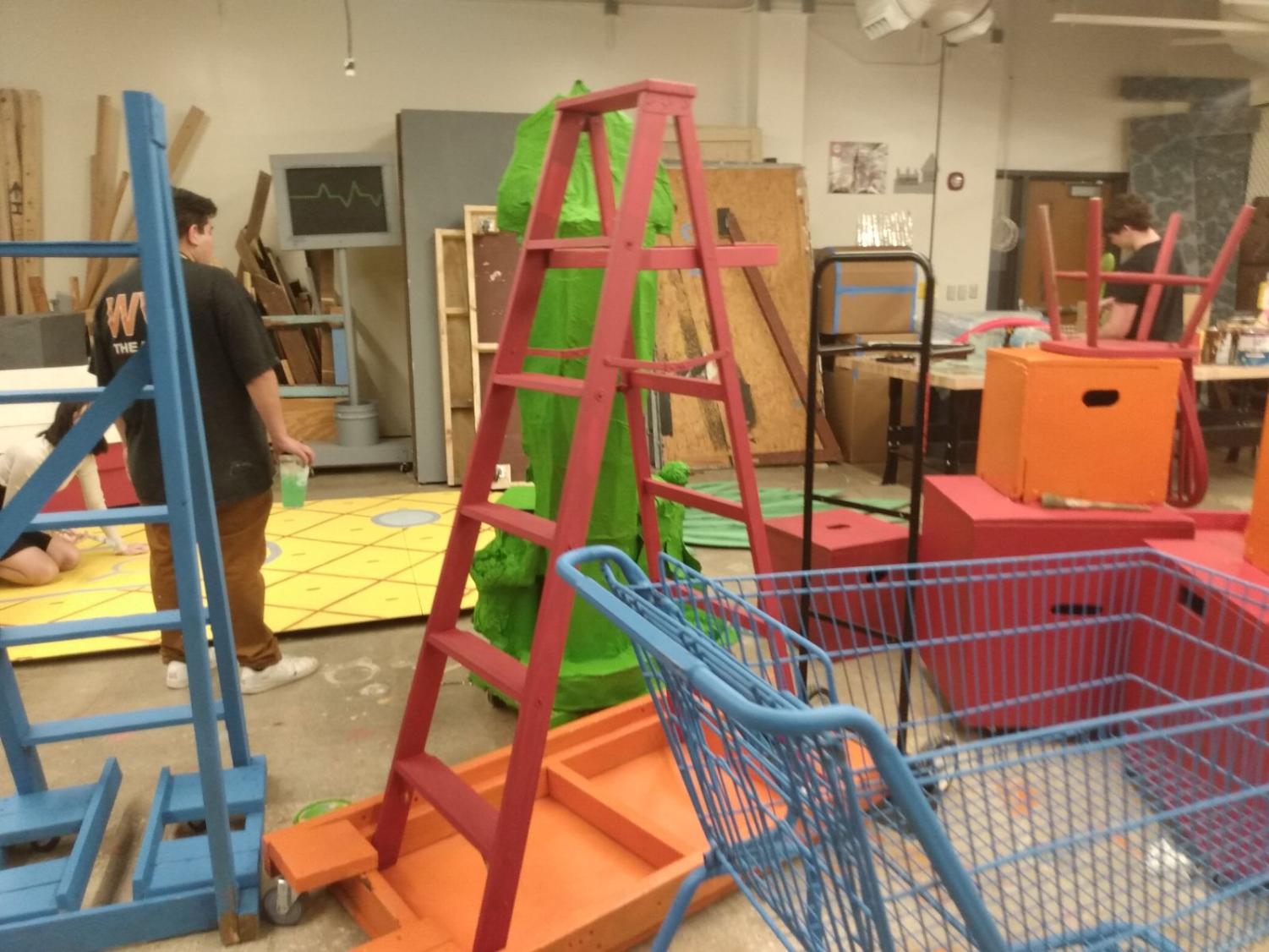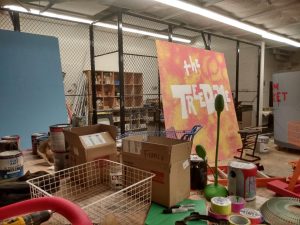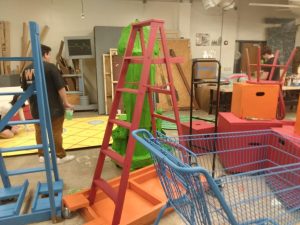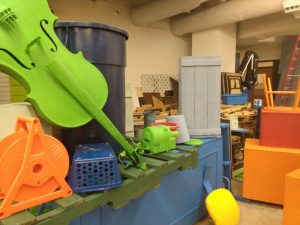The Show Must Go On: Behind-The-Scenes of Spongebob the Musical
February 9, 2023
The night before Spongebob the Musical opens at Round Rock ISD’s Performing Arts Center is chaos, which is typical for many productions before curtain call. The actors and orchestra are missing their cues, Last-minute touches are being added to the set, lighting, makeup, and costumes, and the entire crew is running out of time to be ready for opening night.
“Musical is such a massive production. I mean, for reference, we made 250 costumes,” sophomore Eliza Hebert said. “So it’s definitely a behemoth, a marathon, not a sprint. Musical is really difficult because especially for SpongeBob, it’s not just like sailor outfits or like, I don’t know, Newsies where you just have a bunch of paper boys wearing like stockings and button-ups. We have like cult outfits and sea creature and a giant burger costume.”
And that’s just what the audience sees from their theater seats. Memorizing lines, playing the music, and blocking the stage are important pieces factored into all the weeks of behind-the-scenes work that goes into a production of this scale.
Senior Wednesday Kollodge is the stage manager. Their job is to call the cues for lighting, sound effects, and spotlights during the show. Aside from that, it’s their job to help delineate tasks for everyone under them.
“A lot of my job is just interpreting what the director says into something tangible that everyone can actually then do,” Kollodge said.
Kollodge has built many things for the “Spongebob The Musical” set out of cardboard, such as a jetpack made from cardboard, tape, and hot glue, then covered with tinfoil tape. They also made Spongebob’s pet snail, Gary, out of cardboard and scotch tape.
“I just like being able to like actually make a world, like, you start with a chunk of wood that is not the right shape for anything, and then you have an entire scene,” Kollodge said. “I like how the chaos comes together and manages to create surprisingly deep emotions.”
The lighting on the stage is filled with tranquil blues and warm sea greens bright tomato reds, lime greens, and deep blue ombres. At times, the flowing and bobbing mix of blue and green colors looks as if you were looking up at the sky from the depths of the sea, watching the water ripple and flow as it reflects the sun above. That’s all thanks to the lighting designer, Alonzo Fowler ‘24.
“My favorite part of this production was the set,” Fowler said. “So much work went into it, and to finally see it come together was amazing. Something I don’t think everyone knows is how much of a time crunch we are on, for building the set, we often only get a class block to work on it a few times a week. So constructing the set and working off of what other students have done is always a little stressful, as well as tech week, because tech for productions isn’t something you can go home and practice for, so you really only have the time that you’re there to get it done.”
The set for “Spongebob The Musical” featured neon-painted shopping carts, a tall 2D pineapple house, pool noodles, ladders, and curtains made from bubble wrap. The set was well constructed with creative use of everyday objects, resembling random items you might find at the bottom of the ocean.
All the countless hours, weeks, and months working tirelessly on this production culminated in a three-day run, where the last show is much more organized and filled with zingy, happy, exhausted, and sad emotions at the show’s end. Then the audience files out of their seats, the crew strikes the set, and actors and crew go to cast parties, celebrating all their hard work.
“I feel like while tech theatre is not necessarily well-known or often addressed, it is impossible to ignore it when every aspect of the world is technical theatre,” said Kollodge. “Without the lights, sound, costumes, makeup, set, there isn’t really a show.”

